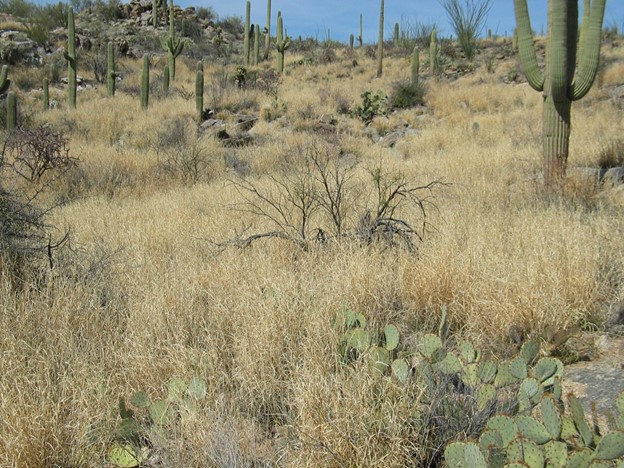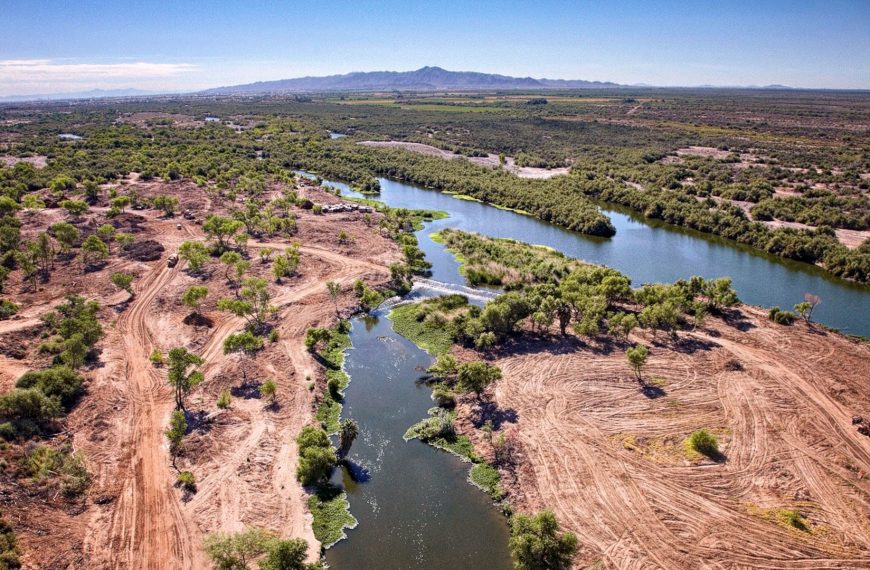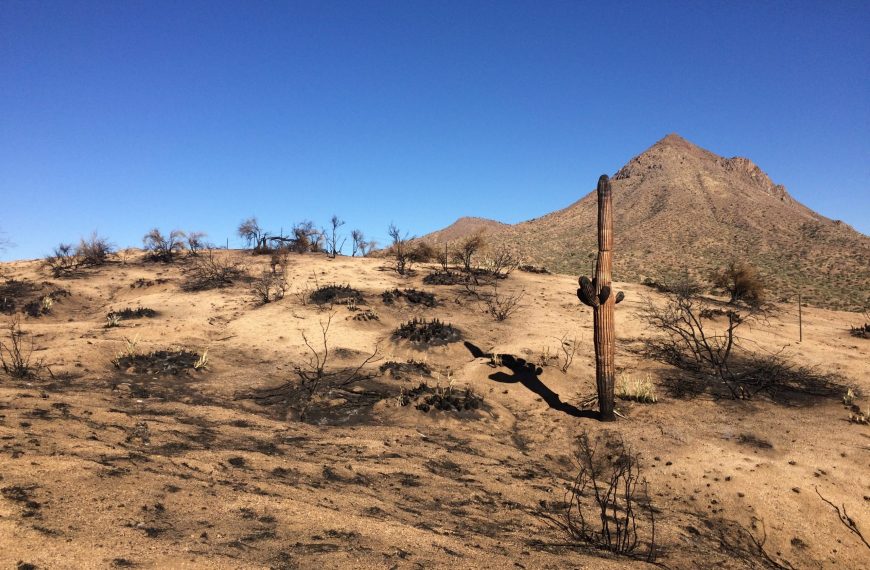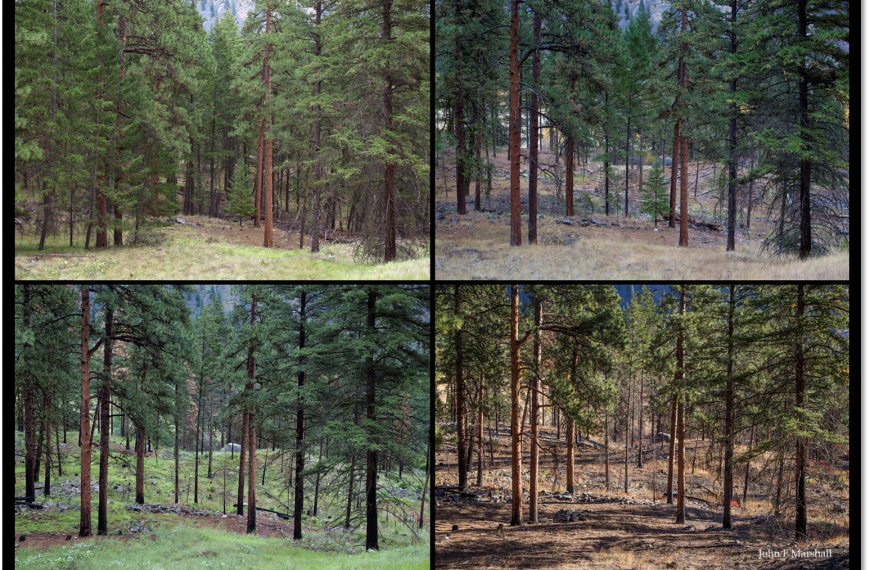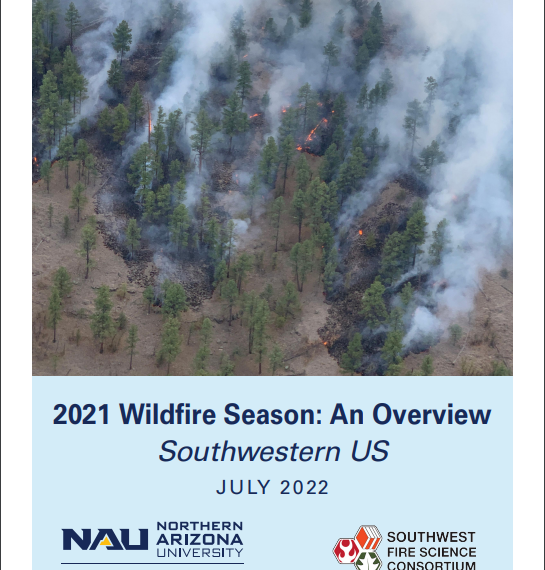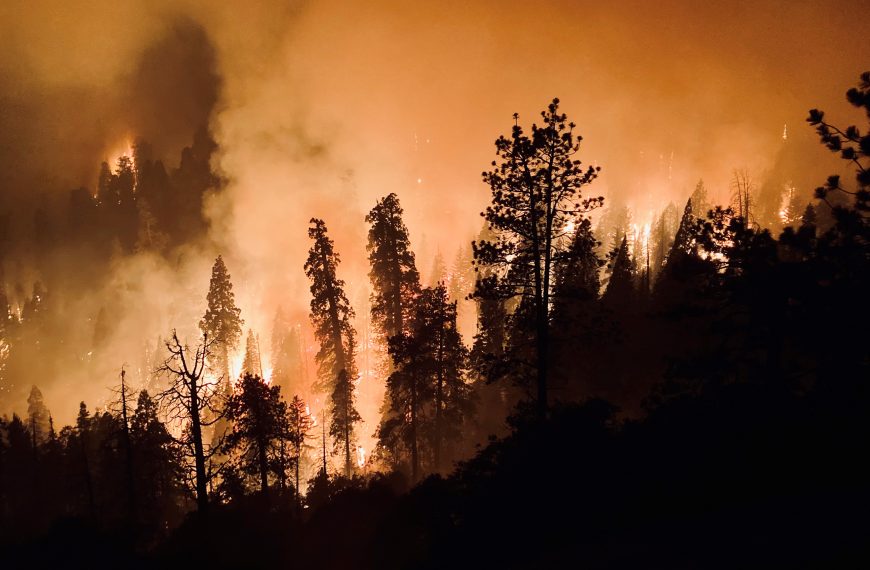IN A NUTSHELL
A panel of researchers and managers discusses the impact of non-native invasive grasses on dry desert systems and various methods to remove, monitor, or slow their spread.
The fire regime of dry desert systems, such as the Sonoran, historically consisted of infrequent, low intensity, size-limited fires. Native grasses and other vegetation, which grow in clumps and patches, are typically not contiguous enough to carry flames over a large area or allow fires to build enough heat to grow in intensity. A majority of desert woody species evolved to react well to this sparse fire regime, sprouting back after mild severity burns. The proliferation of introduced cool season grasses has changed the way that fire interacts with the system as a much greater body of biomass accumulates under trees and shrubs. In response, fires have intensified in size and impact, detrimentally impacting native systems.
In this webinar, a panel of scientists and practitioners will discuss a number of management techniques and research questions being utilized or tested in an effort to reduce the presence of introduced grasses and restore the historic fire regime. These include:
- Researching whether fire historically maintained the clumpy pattern of native vegetation in a self-perpetuating cycle.
- Reducing the risk of wildfire severity and extent, retaining native plant communities, and maintaining ecological processes in dry desert systems through a variety of invasive species removal techniques.
- Producing fire breaks, or strips of treatment which are intended to repress the forward progress of wildfires, through restoration of native vegetation patchiness and pruning of native woody species.
- Utilizing new technologies to detect invasive grasses and monitor their spread, assess treatment and cost-effectiveness, and present results from a networked experiment that tests vegetation management practices across the southwestern US.
Collectively, this information can be used to improve current practices and help develop new approaches to slow the invasive grass-fire cycle in dryland ecosystems of the southwestern US.
Presenters: Helen Rowe, McDowell Sonoran Conservancy and Northern Arizona University; Mary Lata, Tonto National Forest; Seth M Munson, US Geological Survey; and Alan Sinclair, Siphon Draw Fire and Fuels
Recorded on: August 10, 2023
Additional resources mentioned in the webinar:
Study on removal methods and seeding: https://www.cambridge.org/core/journals/invasive-plant-science-and-management/article/pennisetum-ciliare-a-review-of-treatment-efficacy-competitive-traits-and-restoration-opportunities/0F512663DE2A1AB9CCD175A500E321D4
QUIC-Fire explainer: https://www.fs.usda.gov/research/treesearch/59686
Publication on invasive buffelgrass detection through satellite and UAV imagery: https://zslpublications.onlinelibrary.wiley.com/doi/full/10.1002/rse2.116
Study on sagebrush steppe fuel breaks: https://esajournals.onlinelibrary.wiley.com/doi/full/10.1002/fee.2045
Review of fire effects on biocrusts: https://www.sciencedirect.com/science/article/pii/S2351989420309215
Fire Ecology and Management Congress in Monterey, California on December 4-8, 2023: https://fireecology.org/calendar-entries/firecongress23
Session hosted by Mary Lata: Changing Fire Regimes in the Sonoran Desert
Papers by Helen Rowe on cost efficacy and response of native plant communities:
Comparing common Buffelgrass (Pennisetum ciliare) removal techniques: https://link.springer.com/article/10.1007/s10530-023-03080-w
Comparing common fountain grass removal techniques: https://link.springer.com/article/10.1007/s10530-022-02879-3
This webinar is co-hosted by the Arizona Wildfire Initiative.
Register for all our webinars and get the zoom link delivered automatically to your inbox each month! You can also unsubscribe at this link. REGISTER FOR ALL WEBINARS HERE.

